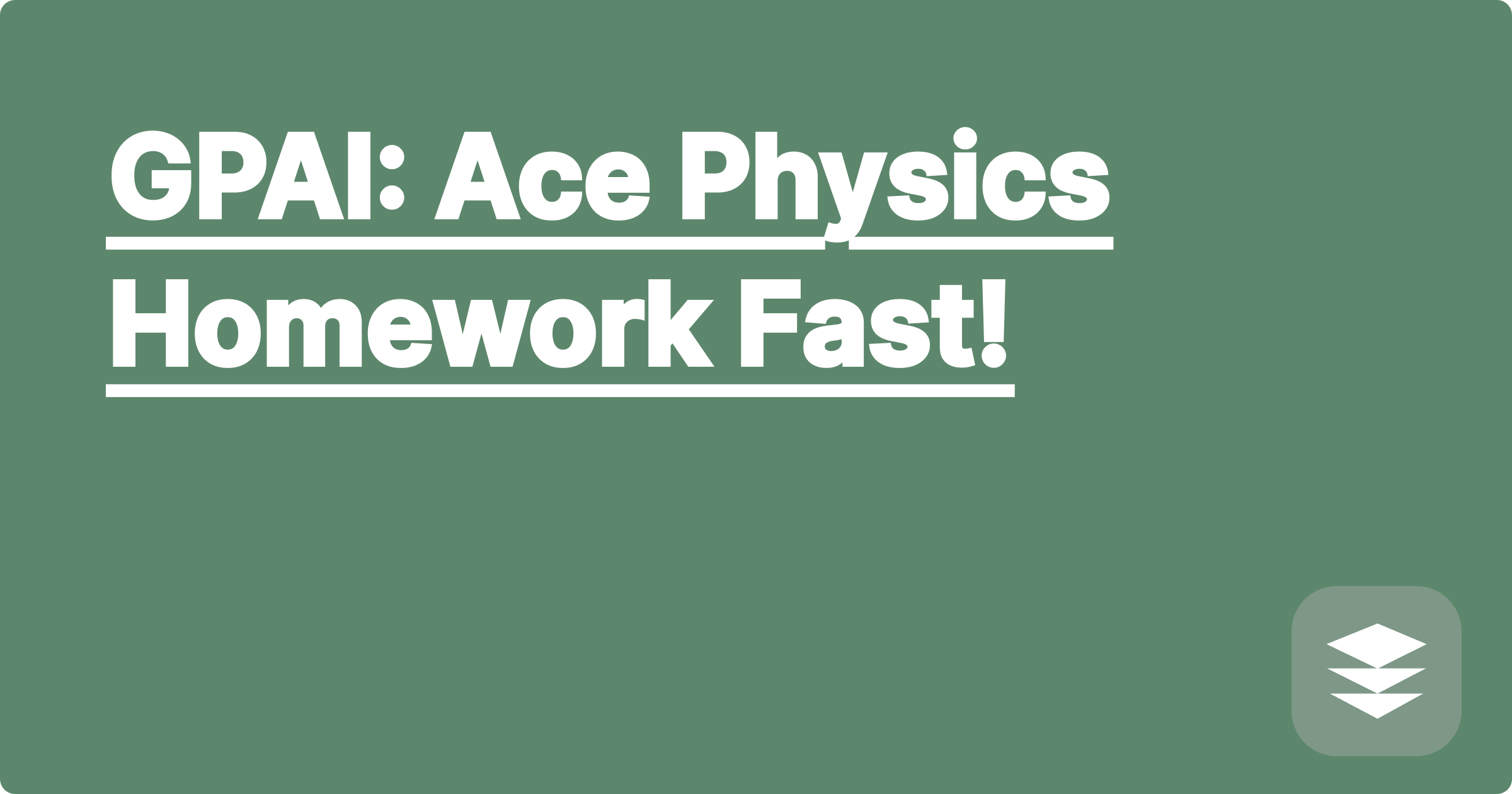
The demanding world of STEM education often leaves students grappling with complex concepts and challenging assignments, particularly in physics. Long nights spent wrestling with problem sets can lead to frustration and hinder academic progress. Fortunately, the rise of Generative Pre-trained Transformer (GPT) models and other AI tools offers a powerful new approach to tackling these challenges, providing students and researchers with the resources to understand and solve complex physics problems more efficiently. These AI assistants can act as virtual tutors, offering step-by-step explanations, generating practice problems, and even helping to verify solutions.
This innovative application of AI in education holds significant implications for STEM students and researchers alike. By leveraging these tools effectively, students can gain a deeper understanding of fundamental principles, improve problem-solving skills, and ultimately achieve better academic outcomes. Researchers can also benefit from AI assistance by automating tedious calculations, exploring complex scenarios, and accelerating the pace of discovery. This blog post will delve into how AI, specifically focusing on tools like ChatGPT, Claude, and Wolfram Alpha, can be utilized to effectively tackle physics homework and bolster overall understanding of the subject.
Physics, with its intricate interplay of mathematical formulas and abstract concepts, often presents a formidable challenge for students. From classical mechanics to electromagnetism and quantum physics, the breadth and depth of the subject can be overwhelming. Many students struggle to translate theoretical knowledge into practical problem-solving skills. This difficulty can stem from a lack of conceptual clarity, difficulty visualizing abstract concepts, or simply feeling lost in the face of complex equations. Furthermore, traditional learning resources, such as textbooks and lectures, may not always provide the personalized guidance and support that individual students need to overcome these obstacles. This gap between theoretical understanding and practical application is where AI can step in to bridge the divide.
AI-powered tools like ChatGPT, Claude, and Wolfram Alpha offer a unique approach to physics problem-solving. ChatGPT and Claude, for example, can be used to break down complex problems into smaller, more manageable steps. They can provide explanations for each step, clarifying the underlying concepts and guiding the student towards a solution. Wolfram Alpha, with its powerful computational engine, can be used to verify solutions, perform complex calculations, and even generate visualizations. By combining the explanatory power of language models with the computational prowess of Wolfram Alpha, students can gain a more comprehensive and intuitive understanding of physics.
Begin by clearly defining the physics problem you need to solve. Input the problem statement into ChatGPT or Claude, ensuring you include all relevant information, such as given values, units, and the specific quantity you need to calculate. The AI will then process the input and provide a step-by-step solution. As the AI generates the solution, pay close attention to the reasoning behind each step. If any step is unclear, ask the AI for further clarification. This interactive process can help solidify your understanding of the underlying concepts. Once you have obtained a solution, use Wolfram Alpha to verify the answer. Input the relevant equations and values into Wolfram Alpha and compare its output with the AI-generated solution. This verification step helps ensure accuracy and builds confidence in your problem-solving approach.
Consider a classic physics problem: calculating the trajectory of a projectile. You are given the initial velocity and launch angle and need to determine the maximum height and range of the projectile. Inputting this problem into ChatGPT or Claude will yield a step-by-step solution, breaking down the problem into its component equations, such as the vertical and horizontal motion equations. The AI will explain the application of these equations and guide you through the process of solving for the unknowns. For instance, it might explain how to use the vertical velocity component and the acceleration due to gravity to calculate the time it takes for the projectile to reach its maximum height. It would then show how to use this time to calculate the maximum height itself using the appropriate kinematic equation. Finally, Wolfram Alpha can be used to verify the results by directly inputting the initial conditions and requesting the maximum height and range. It will quickly compute the results, confirming the accuracy of the AI-generated solution.
Another example could involve calculating the equivalent resistance in a complex circuit. ChatGPT or Claude can guide you through the process of simplifying the circuit step-by-step, applying the rules for series and parallel resistors. Wolfram Alpha can then be used to calculate the final equivalent resistance based on the simplified circuit. This approach provides a clear and efficient way to tackle complex circuit analysis problems.
To maximize the benefits of AI in physics, it's crucial to use these tools strategically. Don't simply rely on AI to generate answers. Instead, focus on understanding the underlying concepts and reasoning behind each step of the solution. Actively engage with the AI by asking clarifying questions and exploring different approaches. Use AI as a supplement to your learning, not a replacement for traditional study methods. Combine AI-assisted problem-solving with textbook study, lectures, and discussions with peers to gain a comprehensive understanding of the subject. Furthermore, remember that while AI can be a powerful tool, it's essential to develop your own problem-solving skills. Practice solving problems independently to solidify your understanding and build confidence.
In conclusion, AI tools like ChatGPT, Claude, and Wolfram Alpha offer a transformative approach to learning and mastering physics. By leveraging these tools effectively, students can overcome challenges, deepen their understanding of complex concepts, and achieve academic success. Embrace these technological advancements and explore how they can enhance your learning journey in the fascinating world of physics. Start by experimenting with different AI tools and find the ones that best suit your learning style. Don't hesitate to ask questions and explore the vast potential of AI in your physics studies.
GPAI: Ace Physics Homework Fast!
Chem Exam Prep: GPAI's Secret Weapon
Conquer Calculus: GPAI Solver's Power
GPAI: Master Organic Chemistry!
Engineering Data: GPAI's Analysis
GPAI: Your Linear Algebra Ally
GPAI: Conquer Your Stats Exams!